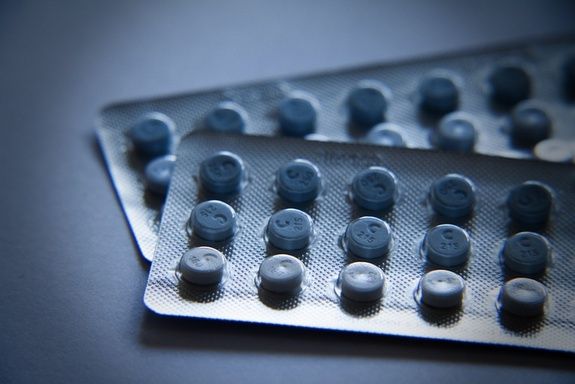How Access to the Pill Boosted Women's Wages

The early availability of the birth control pill is responsible for roughly a third of women's wage gains since the 1960s, finds new research that adds another dimension to the debate over insurance coverage of contraception.
"As the pill provided younger women the expectation of greater control over childbearing, women invested more in their human capital and careers," study researcher Martha Bailey, an economist at the University of Michigan, said in a statement. "Most affected were women with some college, who benefitted from these investments through remarkable wage gains over their lifetimes."
Bailey and her colleagues used data on women's wages and education from the National Longitudinal Survey of Young Women, which began in 1968 and continued with 21 follow-up interviews with more than 5,000 women over the years. In this study, the researchers focused on the 4,300 or so women born between 1943 and 1954.
For these women, early access to the pill varied. After birth control pills were approved for contraceptive use in healthy women in 1960, U.S. states varied as to what age unmarried women could get the pill without parental permission. In some, the age was 18, while other women had to wait until 21.
Availability doubled the use of the pill among women in the 18- to 21-year-old range — a crucial time, given the beginning of college and higher education. With oral contraceptives, women no longer had to choose between investing in their careers and investing in a mate (with which came the risk of pregnancy), the researchers said.
The result, Bailey and her colleagues report in a National Bureau of Economic Research working paper due to be published in July in the American Economic Journal: Applied Economics, was that women in early-access states saw a decline in their wages in their 20s as they invested in their education. By the 1980s and 1990s, though, those same women were making 8 percent more each year than their counterparts who hadn't had access to the pill so early. [7 Surprising Facts About the Pill]
Of the one-third bump in wages attributable to early access to the pill, two-thirds of that came from these women having greater workplace experience, the study found. The rest came from women gaining more education and from choosing more lucrative, traditionally male, fields.
Sign up for the Live Science daily newsletter now
Get the world’s most fascinating discoveries delivered straight to your inbox.
The study likely underestimates the role of the pill, Bailey said, given that it did not take into account the effect of pill use differences after age 20 or so.
"The pill’s availability likely altered norms and expectations about marriage and childbearing," Bailey said. "It also likely affected the decisions of companies to hire and promote women."
You can follow LiveScience senior writer Stephanie Pappas on Twitter @sipappas. Follow LiveScience for the latest in science news and discoveries on Twitter @livescience and on Facebook.

Stephanie Pappas is a contributing writer for Live Science, covering topics ranging from geoscience to archaeology to the human brain and behavior. She was previously a senior writer for Live Science but is now a freelancer based in Denver, Colorado, and regularly contributes to Scientific American and The Monitor, the monthly magazine of the American Psychological Association. Stephanie received a bachelor's degree in psychology from the University of South Carolina and a graduate certificate in science communication from the University of California, Santa Cruz.

'Love hormone' oxytocin can pause pregnancy, animal study finds

'Mini placentas' in a dish reveal key gene for pregnancy









